Quoting @hotpaw, in this similar answer:
"The real and imaginary arrays, when put together, can represent a complex array. Every complex element of the complex array in the frequency domain can be considered a frequency coefficient, and has a magnitude sqrt(RR + II))".
So, the coefficients are the complex elements in the array returned by the fft function. Also, it is important to play with the size (the number) of the bins for the FFT function. It would make sense to test a bunch of values and pick the one that makes more sense to your application. Often, it is in the same magnitude of the number of samples. This was as assumed by most of the answers given, and produces great and reasonable results. In case one wants to explore that, here is my code version:
%matplotlib inline
import numpy as np
import matplotlib.pyplot as plt
import scipy.fftpack
fig = plt.figure(figsize=[14,4])
N = 600 # Number of samplepoints
Fs = 800.0
T = 1.0 / Fs # N_samps*T (#samples x sample period) is the sample spacing.
N_fft = 80 # Number of bins (chooses granularity)
x = np.linspace(0, N*T, N) # the interval
y = np.sin(50.0 * 2.0*np.pi*x) + 0.5*np.sin(80.0 * 2.0*np.pi*x) # the signal
# removing the mean of the signal
mean_removed = np.ones_like(y)*np.mean(y)
y = y - mean_removed
# Compute the fft.
yf = scipy.fftpack.fft(y,n=N_fft)
xf = np.arange(0,Fs,Fs/N_fft)
##### Plot the fft #####
ax = plt.subplot(121)
pt, = ax.plot(xf,np.abs(yf), lw=2.0, c='b')
p = plt.Rectangle((Fs/2, 0), Fs/2, ax.get_ylim()[1], facecolor="grey", fill=True, alpha=0.75, hatch="/", zorder=3)
ax.add_patch(p)
ax.set_xlim((ax.get_xlim()[0],Fs))
ax.set_title('FFT', fontsize= 16, fontweight="bold")
ax.set_ylabel('FFT magnitude (power)')
ax.set_xlabel('Frequency (Hz)')
plt.legend((p,), ('mirrowed',))
ax.grid()
##### Close up on the graph of fft#######
# This is the same histogram above, but truncated at the max frequence + an offset.
offset = 1 # just to help the visualization. Nothing important.
ax2 = fig.add_subplot(122)
ax2.plot(xf,np.abs(yf), lw=2.0, c='b')
ax2.set_xticks(xf)
ax2.set_xlim(-1,int(Fs/6)+offset)
ax2.set_title('FFT close-up', fontsize= 16, fontweight="bold")
ax2.set_ylabel('FFT magnitude (power) - log')
ax2.set_xlabel('Frequency (Hz)')
ax2.hold(True)
ax2.grid()
plt.yscale('log')
Output:


